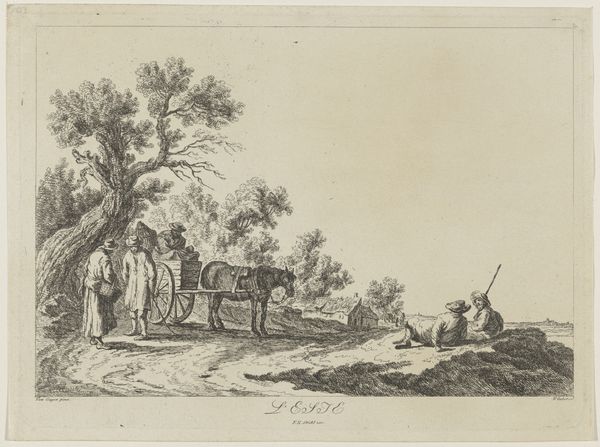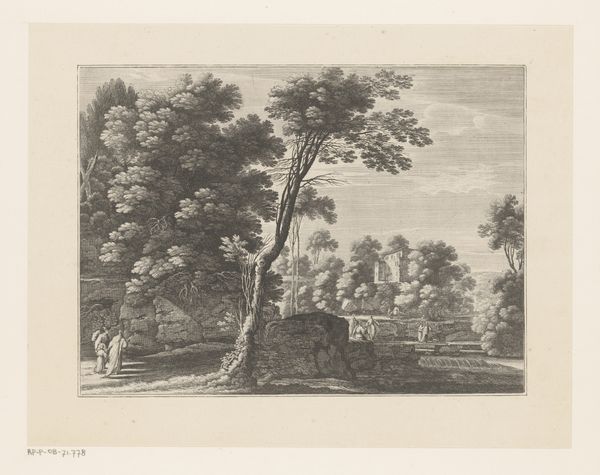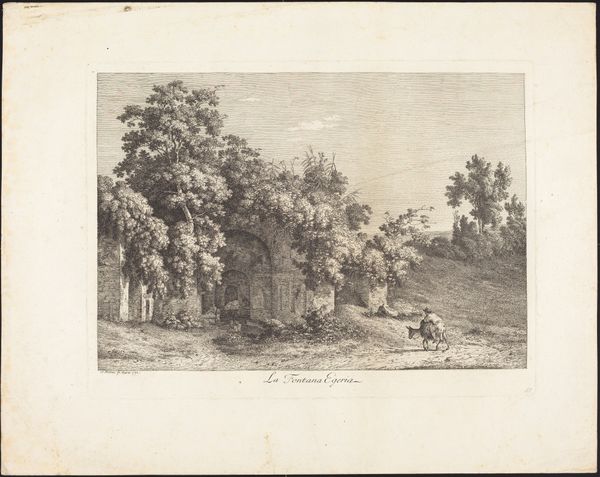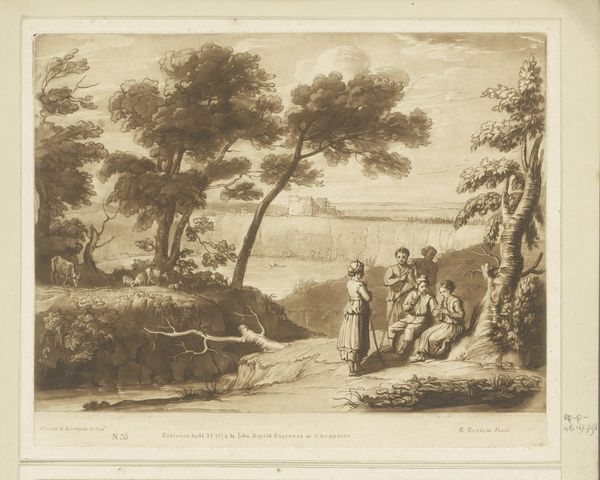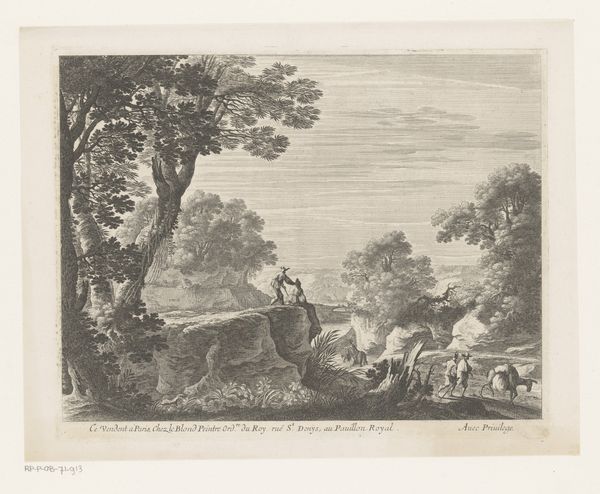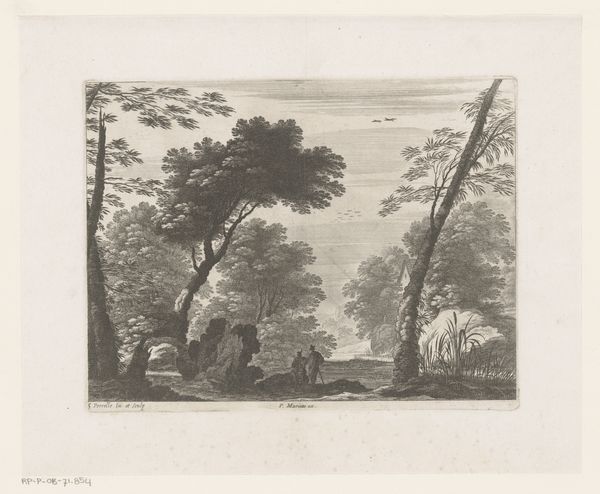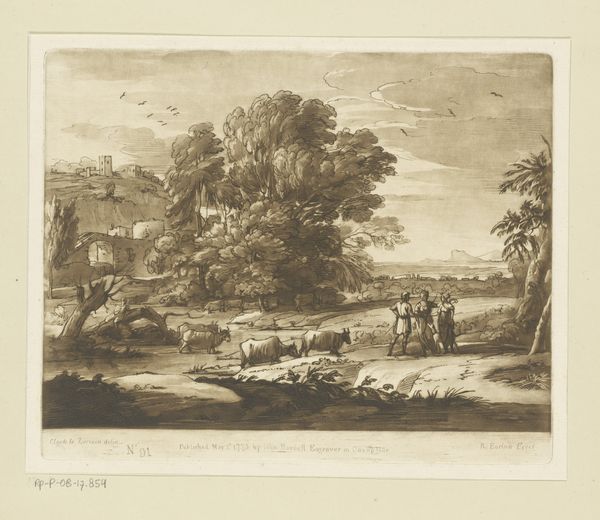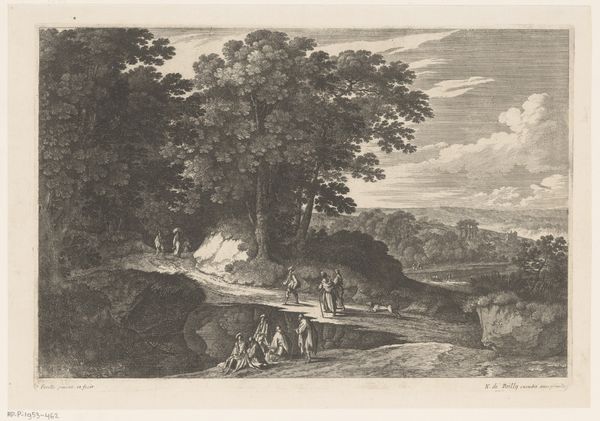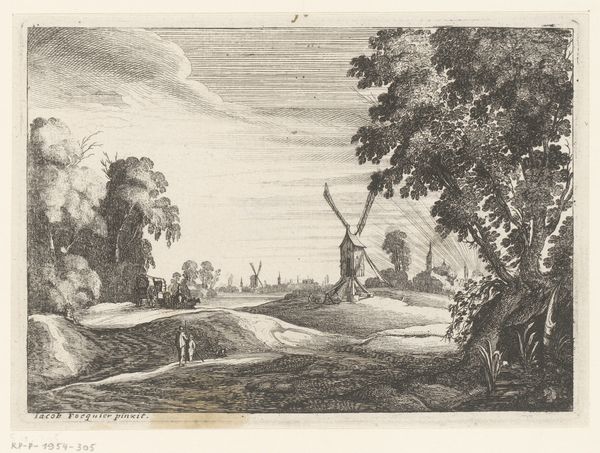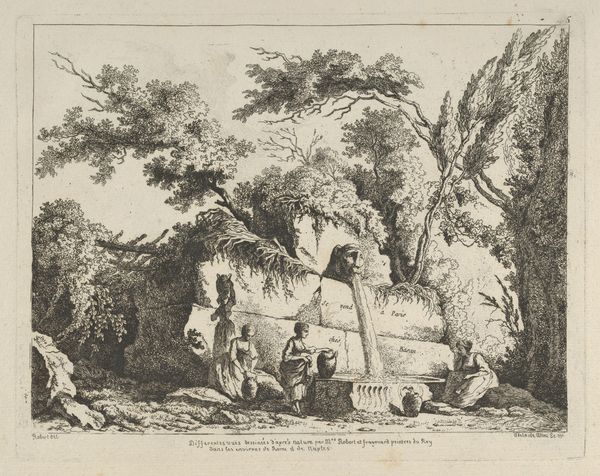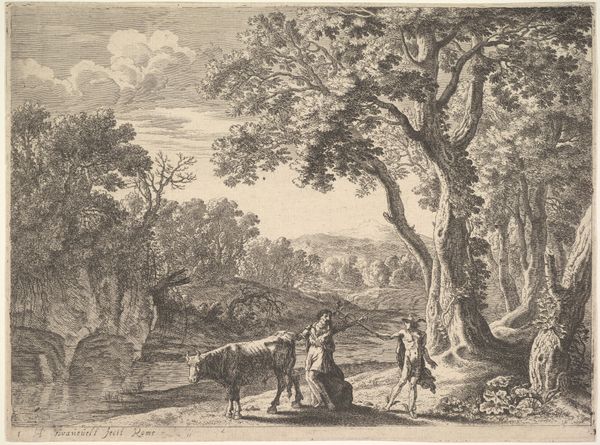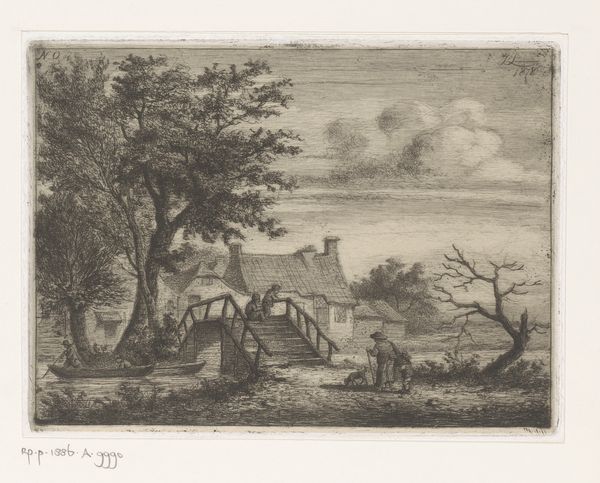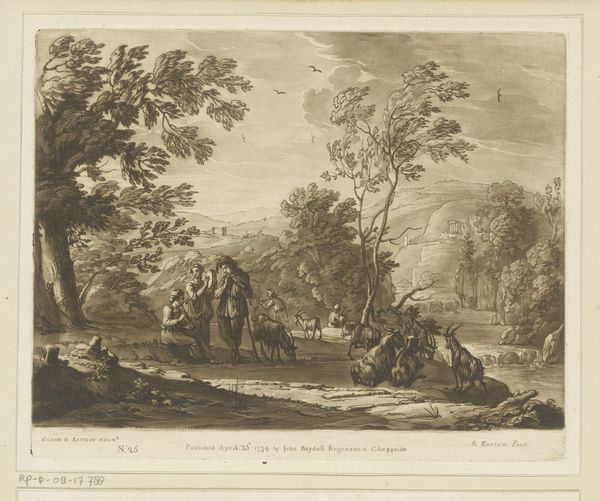
etching
#
baroque
#
etching
#
landscape
#
etching
#
figuration
Dimensions: height 225 mm, width 316 mm
Copyright: Rijks Museum: Open Domain
Curator: Here we have "Resting Figures in a Dune Landscape," an etching made around 1760 by Franz Edmund Weirotter, residing here at the Rijksmuseum. Editor: There’s such a sense of calm here, even languor. The contrast between the restful figures in the foreground and the suggestion of labor behind them creates an interesting tension. Curator: Precisely. Note how Weirotter utilizes the etching technique. The density and direction of the lines guide the eye, creating a recession into the landscape. See how the light seems to softly fall across the scene? Editor: The landscape becomes more than just a pretty background. The two figures relaxing almost feel like they are deliberately placed in opposition to the unseen toil occurring to their right. Is Weirotter making a statement about labor and privilege here? Who benefits from rest? Who affords the space to reflect? Curator: That interpretation introduces interesting implications, given the broader context of social stratifications that existed in Europe at the time. But also consider the tree dominating the right side. Its boughs hang low, mimicking the postures of the resting figures. See how the line work of the tree differs dramatically from that in the dunes? Editor: True, the differences in line work define social realities as much as landscape ones. I can't help but read into that now. It's an image that is ostensibly about the leisure of some that really implicates others and makes one consider access and agency. Curator: Whether intentional or not, Weirotter’s rendering, achieved through masterful strokes of the etching needle, provokes contemplation. Its power lies in the simplicity of form, while its deeper meaning encourages continuous reassessment of historical and social relations. Editor: Absolutely. It seems so simple at first, but Weirotter prompts us to dig deeper, prompting crucial considerations surrounding socio-economic power dynamics within the quiet and conventional scenes that are so easily glossed over.
Comments
No comments
Be the first to comment and join the conversation on the ultimate creative platform.
